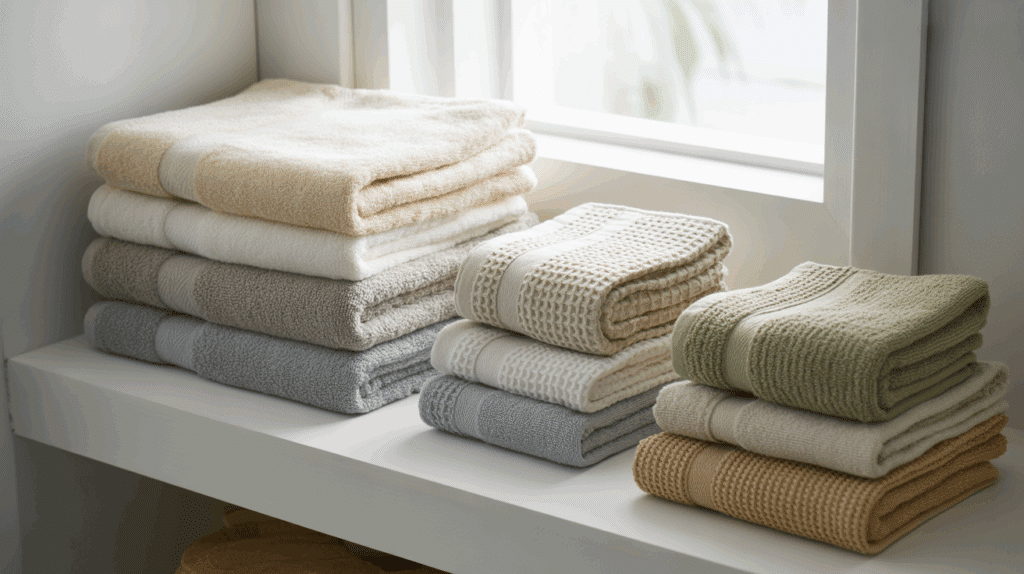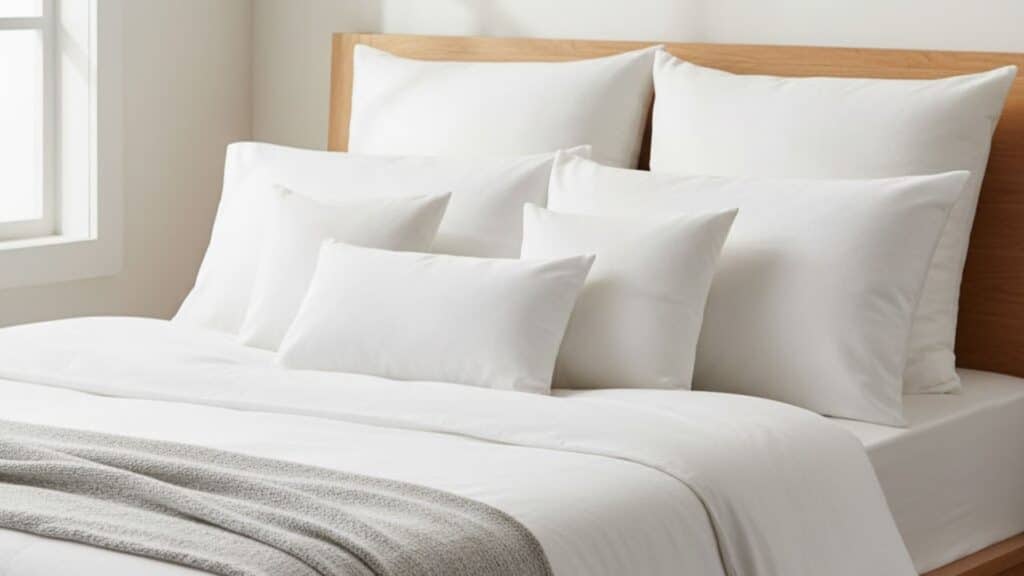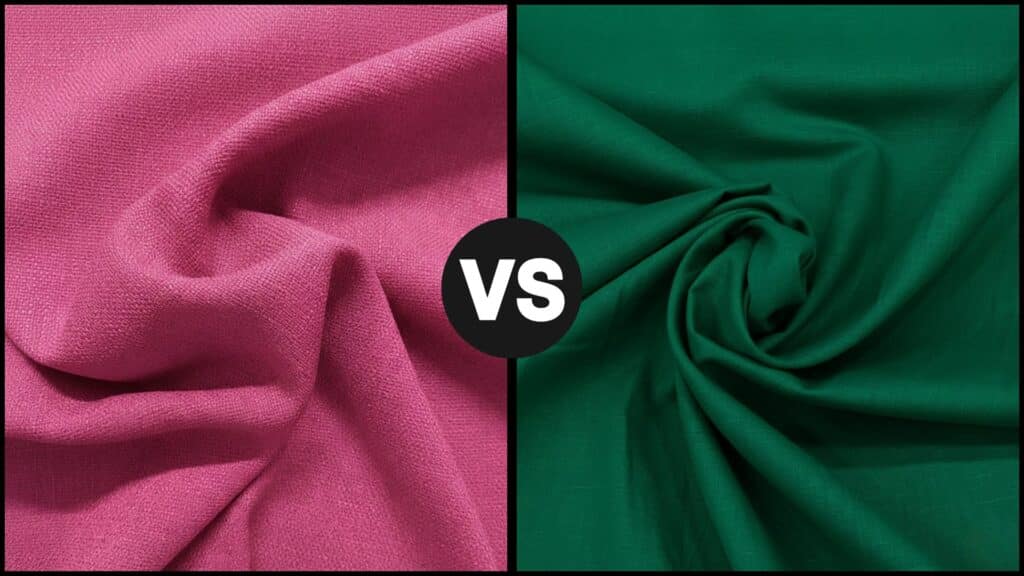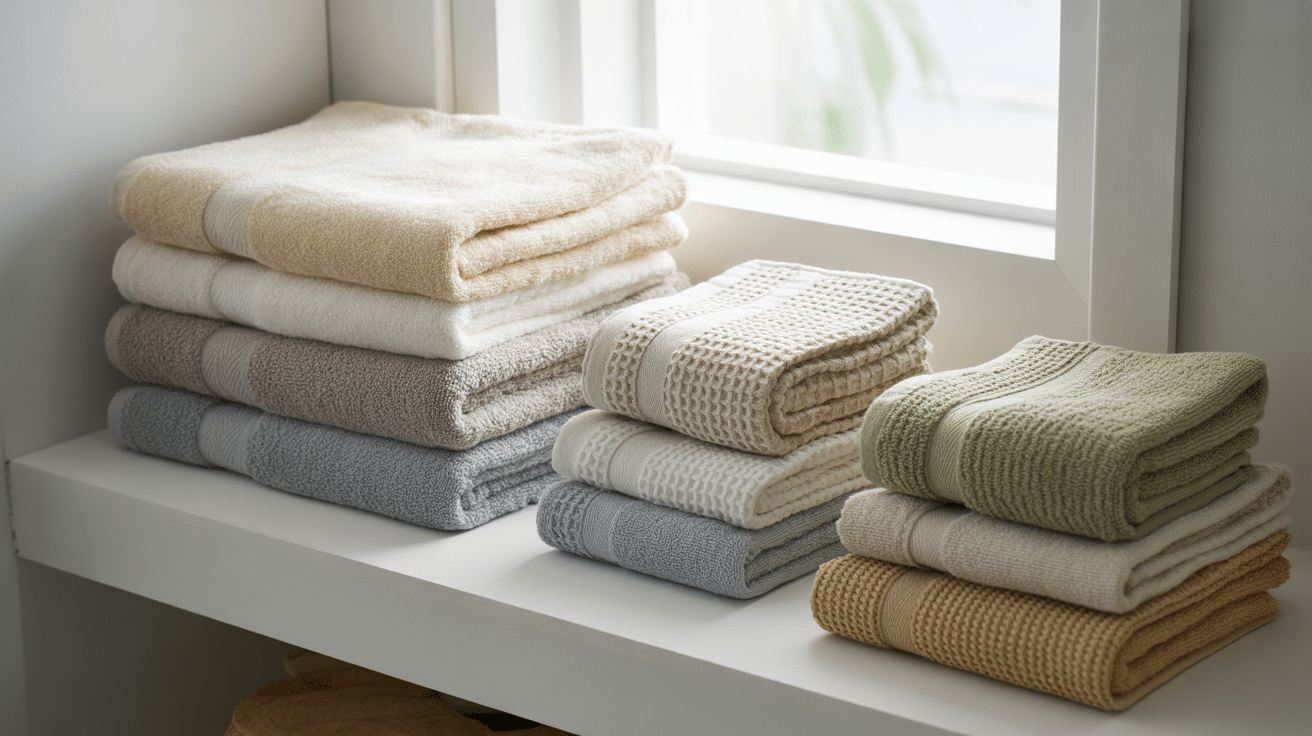You use towels every day, but have you ever thought about what they’re made of?
I used to grab any towel off the shelf without thinking much about it, until I learned how the fabric can completely change how it feels and performs.
In this guide, you’ll find out what towels are made of and how each material affects softness, absorbency, and drying speed.
I’ll also walk you through different towel weaves, weight levels, and care tips so you can choose the one that best fits your home and routine.
By the end, you’ll know exactly which towels are worth bringing home.
Towel Material Matters More Than You Think
The fabric of your towel does more than just dry your skin. It decides how soft it feels, how quickly it dries, and how long it lasts.
Each fiber, cotton, bamboo, microfiber, or linen, has its own qualities that change how a towel performs.
What does the material affect:
- Absorbency: How well it soaks up water
- Texture: How it feels on your skin
- Drying speed: How fast it’s ready to reuse
- Durability: How long it stays soft and strong
A cotton towel feels cozy after a bath, while a bamboo or microfiber towel dries faster and packs lighter. Linen towels are great for kitchens since they dry quickly and resist odor.
Heavier towels feel plush but take longer to dry. Lighter ones dry fast but may not feel as thick.
Once you know how each material behaves, picking the right towel is simple. You’ll know which type suits your space, habits, and comfort best.
What are Towels Made Of?
Most towels are made from natural or synthetic fibers. Each one feels and performs differently in softness, absorbency, and drying speed.
If you’ve ever wondered what material towels are made of, it usually comes down to cotton, bamboo, microfiber, or linen; each suited for a specific need.
Here’s a quick look at the main materials you’ll find when shopping for towels.
1. Cotton Towels (The Everyday Classic)
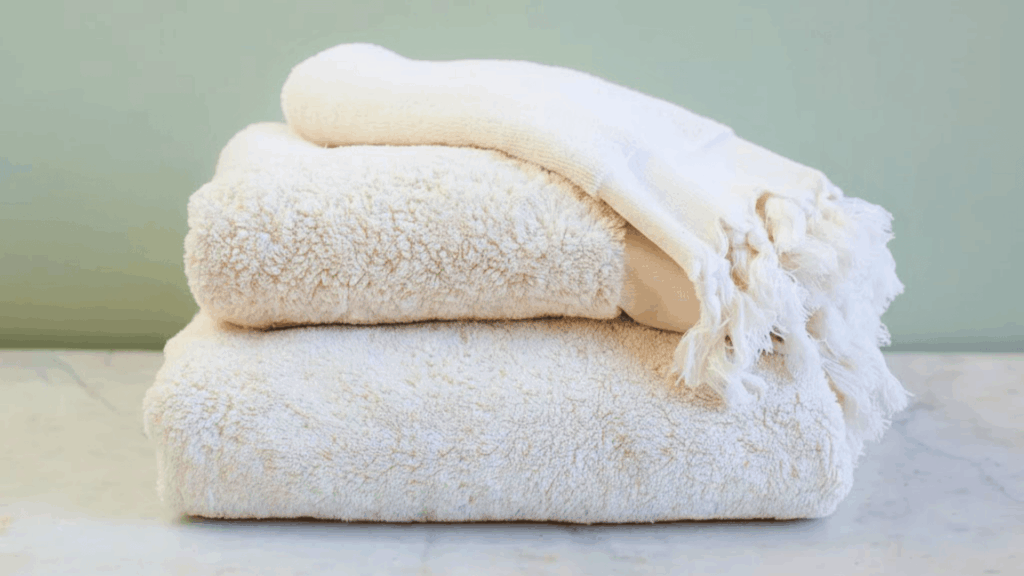
Cotton is the most common towel fabric for daily use. It’s soft, breathable, and highly absorbent. Cotton towels handle frequent washing well and stay gentle on the skin.
Benefit: Reliable, long-lasting comfort for everyday drying.
2. Egyptian Cotton
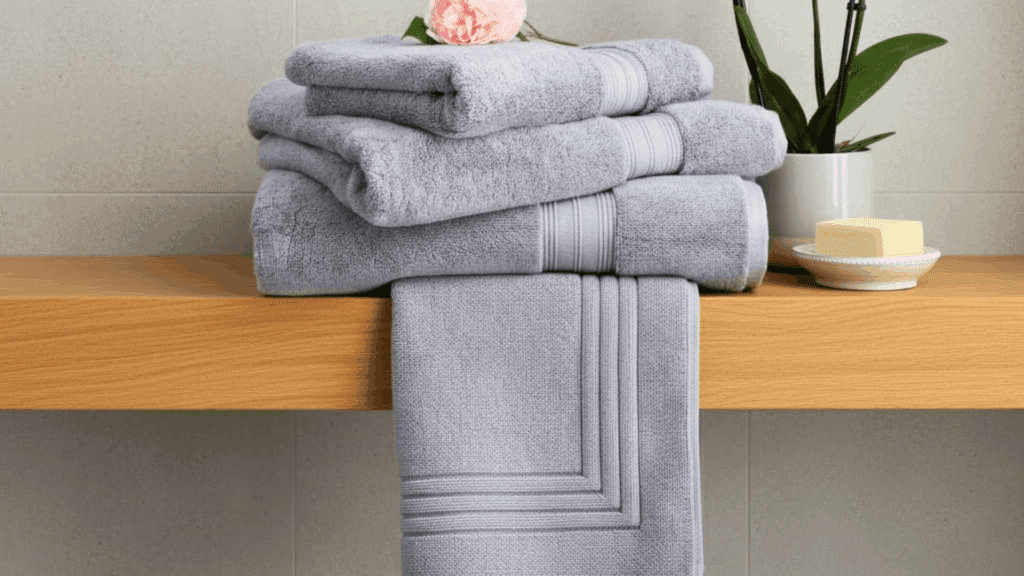
Egyptian cotton uses extra-long fibers that give towels a thick, plush texture. They’re highly absorbent and feel softer with time.
Though heavier and slower to dry, they’re perfect when you want a rich, cozy feel.
Benefit: Deep softness and high absorbency for a spa-like experience.
3. Turkish Cotton

Turkish cotton has long, smooth fibers that create soft, durable towels. They’re lighter than Egyptian cotton and dry faster, ideal for humid areas or frequent washing.
Benefit: Soft yet fast-drying towels that improve with every use.
4. Pima and Supima Cotton
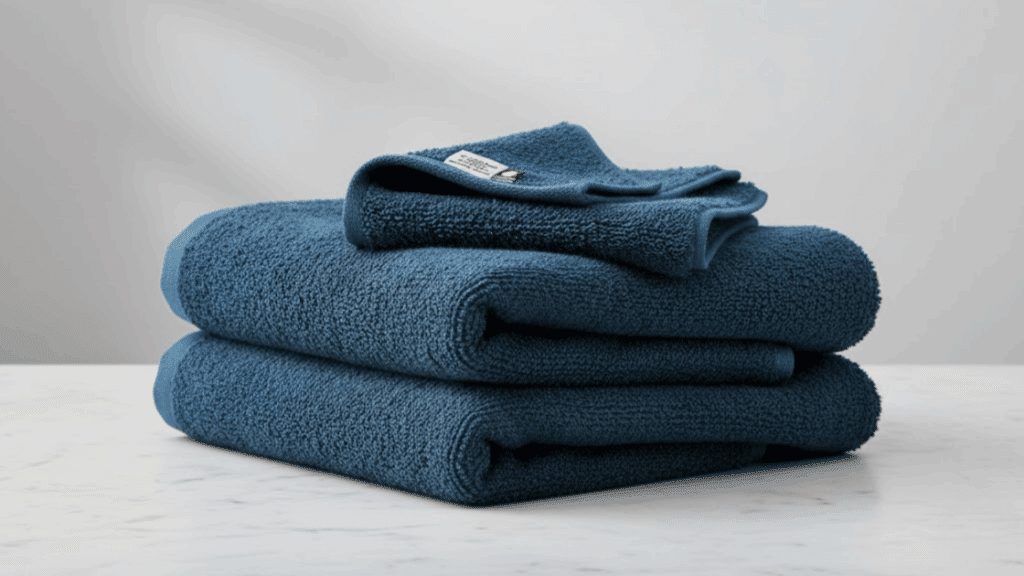
Pima and Supima cotton are grown mainly in the U.S. Their fine, long fibers make towels smooth, durable, and less likely to fray. They balance softness with quick drying.
Benefit: Smooth, strong towels that stay fresh after many washes.
5. Organic Cotton
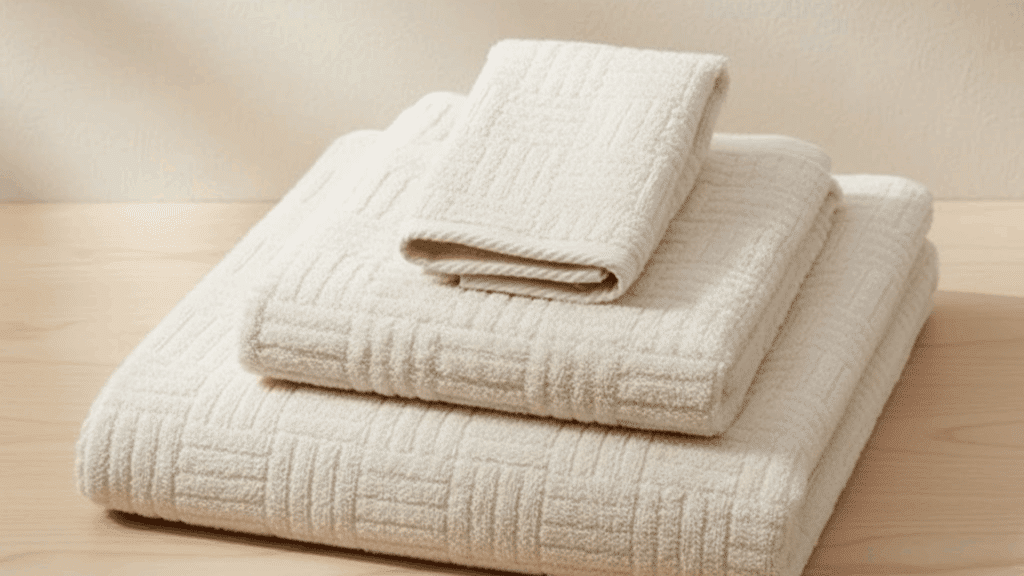
Organic cotton is grown without harmful chemicals or pesticides. It feels just as soft as regular cotton but offers a cleaner, safer option for sensitive skin.
Benefit: Gentle, eco-conscious comfort suitable for daily use.
6. Bamboo and Bamboo Blends
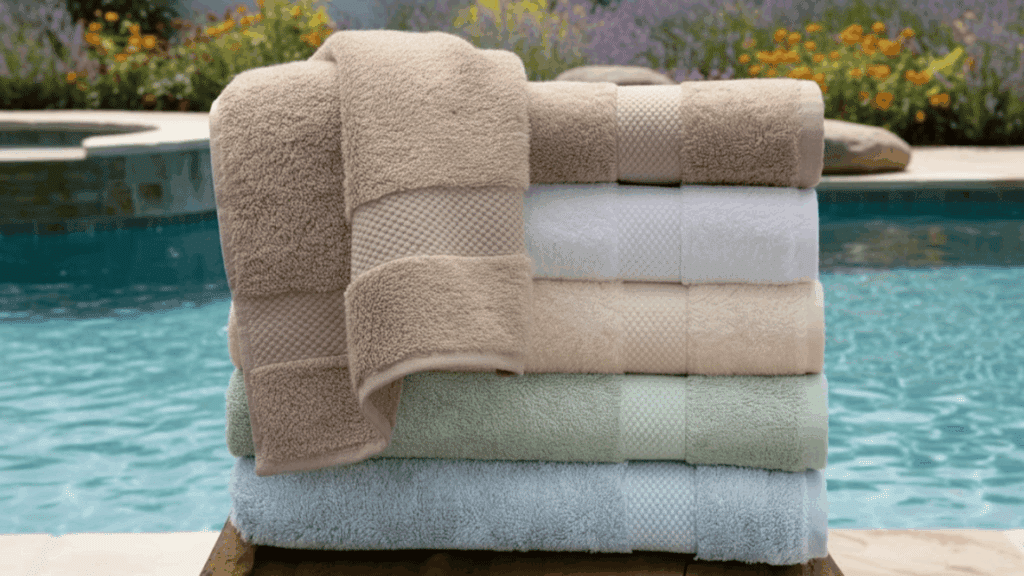
Bamboo towels are made from bamboo-viscose fibers that feel silky and stay cool. They’re naturally breathable, odor-resistant, and quick to dry. Blended versions combine softness with added strength.
Benefit: Lightweight, fresh towels that dry fast and stay odor-free.
7. Microfiber Towels

Microfiber towels are made from synthetic fibers like polyester and polyamide. They absorb water quickly, dry in minutes, and take up little space. Great for travel, gym use, or hair drying.
Benefit: Compact, quick-drying towels for active routines.
8. Linen Towels
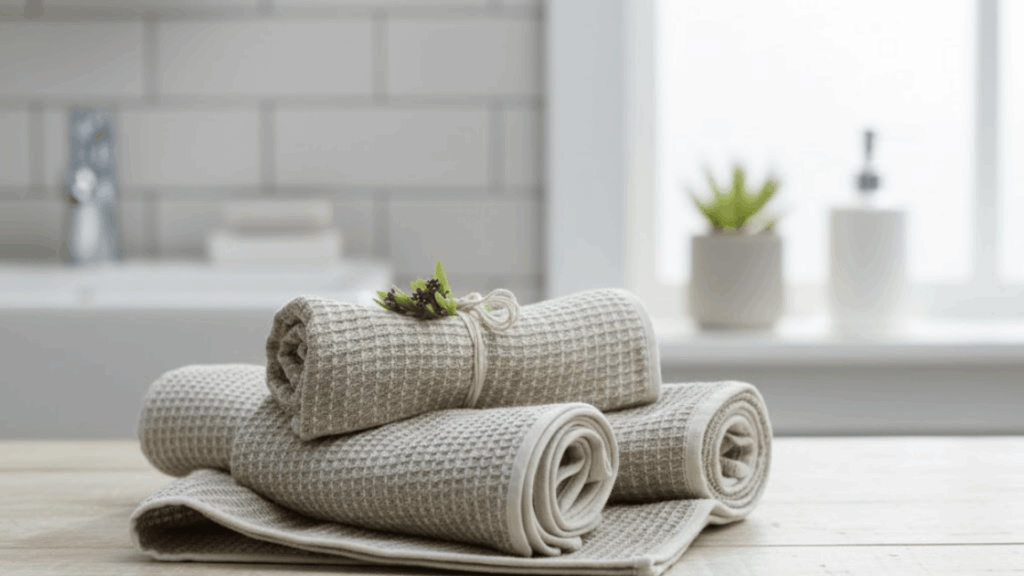
Linen towels come from natural flax fibers. They’re durable, quick to dry, and resist odor buildup. While not fluffy, they’re ideal for kitchens or bathrooms where space and airflow matter.
Benefit: Long-lasting, fast-drying towels that stay fresh longer.
9. Specialty and Sustainable Options

Some towels are made from newer fibers like modal or lyocell (TENCEL). These are plant-based, silky, and highly absorbent. They also come from renewable wood sources, making them eco-friendly.
Benefit: Soft, sustainable towels that offer modern comfort and performance.
The Role of Weave and Texture
While fiber type decides absorbency and softness, the weave pattern shapes how a towel feels in daily use. The way threads are woven can change its thickness, drying speed, and comfort.
Here’s a quick look at how different towel weaves compare:
| Weave Type | Description | Feel | Drying Speed | Best For |
|---|---|---|---|---|
| Terry Weave | Features looped yarns that absorb water effectively. The loops add bulk and softness, creating a plush feel. | Thick and cushioned | Moderate | Every day, bath towels |
| Waffle Weave | Has a honeycomb texture that traps air for quicker drying. Lightweight and less bulky than terry. | Light and airy | Fast | Small bathrooms or daily use |
| Velour Weave | One side is sheared for a smooth surface while the other retains absorbent loops. Looks sleek but dries slower. | Soft and smooth | Slow | Guest or display towels |
| Flat-Woven (Peshtemal) | No loops, just tightly woven fibers. Thin, quick to dry, and easy to pack. | Thin and crisp | Very fast | Travel, beach, or gym use |
Each weave offers a different balance of texture and practicality. If you want plush comfort, go for terry. For faster drying and lighter handling, waffle or flat-woven towels work better.
Understanding GSM and Weight for Towels
GSM stands for grams per square meter, which tells you how heavy and dense a towel is. A low GSM means a lighter towel that dries fast, while a high GSM feels thicker and more plush.
- 300–400 GSM: Light and quick-drying, ideal for travel or gym use.
- 400–600 GSM: Mid-weight, best for daily bath towels.
- 600–900 GSM: Thick and soft; perfect for comfort, but slower to dry.
Knowing the GSM helps you pick a towel that fits your lifestyle: lightweight for easy care or heavy for extra comfort.
Choosing the Right Material for Your Needs
Every towel material has its own strength. Some feel plush and cozy, while others are light, compact, or quick to dry. Choosing the right one depends on where and how you plan to use it.
1. For Everyday Use
If you want a towel that feels soft, dries well, and lasts long, choose mid-weight cotton or cotton-bamboo blends.
These towels handle daily washing, absorb water quickly, and stay gentle on your skin. Cotton gives durability, while bamboo adds breathability and freshness.
Best for: Families, bathrooms used daily, or anyone who prefers a balanced feel.
2. For Travel or Gym
When space and drying time matter most, go for microfiber or Turkish cotton towels. Microfiber is thin, fast-drying, and easy to pack, making it ideal for gym bags or trips.
Turkish cotton is slightly thicker but still light enough to dry faster than regular cotton.
Best for: Travel, workouts, swimming, or outdoor use.
3. For Small Bathrooms or Humid Homes
In damp spaces, heavy towels can stay wet too long. Choose waffle-weave or bamboo towels instead.
Their breathable structure allows air to move through, helping them dry faster and resist musty smells. Bamboo also naturally helps control odor and moisture buildup.
Best for: Small bathrooms, apartments, or humid climates.
4. For Kitchens and Guests
For kitchens, handwashing areas, or guest use, linen towels are a great pick.
Linen is sturdy, quick to dry, and resists odor even after repeated use. It keeps its texture wash after wash and looks tidy when folded or hung.
Best for: Kitchens, guest bathrooms, or decorative towel displays.
Care Tips to Make Towels Last Longer
Even quality towels lose softness and absorbency without the right care. A few small habits can help them stay fresh, fluffy, and long-lasting.
- Wash before first use: Removes residue, lint, and coatings so fibers absorb better from day one.
- Use mild detergent: Harsh cleaners wear down loops; gentle detergent keeps fabric soft and strong.
- Skip fabric softeners: They coat fibers and block absorbency; use white vinegar in the rinse instead.
- Avoid overloading the washer: Towels need room to move so detergent rinses out completely.
- Dry on low heat: High heat weakens loops; tumble dry on low or hang to air dry.
- Refresh rough towels: Wash once with vinegar, then again with baking soda to remove buildup.
- Rotate your sets: Give towels time to dry fully between uses to prevent odor and wear.
Simple care goes a long way. When washed and dried properly, your towels stay soft, clean, and ready for everyday comfort.
Wrap Up
Now that you know what are towels made of, it’s easier to see why not all of them feel or work the same.
Each fabric, cotton, bamboo, microfiber, or linen, brings something unique to your daily routine.
I hope this helped you understand how the right material can make drying off more comfortable and keep your towels lasting longer.
Next time you shop, you’ll know exactly what to look for and what to skip.
If you found this helpful, take a look at my other posts for simple ideas and tips to make your home feel a little more comfortable every day.


